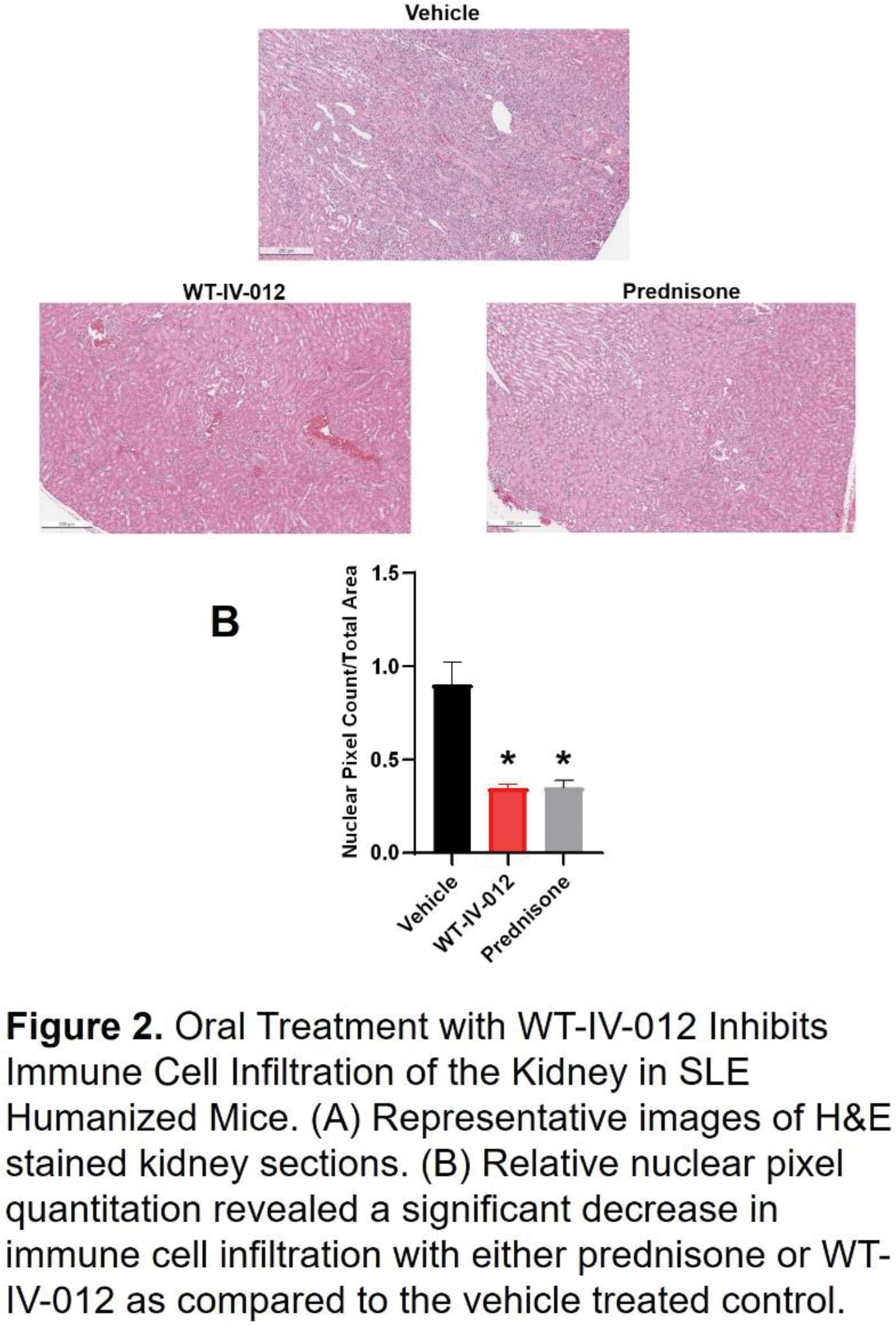

Background: Systemic Lupus Erythematosus (SLE) is a chronic autoimmune disease that causes inflammation in many of the body’s tissues, including the skin, joints, lungs, kidneys and heart. This inflammation causes damage to these tissues and produces significant mortality, with most complications in the early stages of the disease involving direct effects on various organs. SLE affects young women between the ages of 15 and 45 years at a 9:1 rate as compared to men. The etiology is complex and remains elusive, however the susceptibility of women during the years in which estrogen levels are at their highest may suggest a significant and critical contribution to the development of SLE. Estrogens are known to have pleiotropic effects on the immune system which is mediated through either estrogen receptor α (ERα), estrogen receptor β (ERβ) or the cell surface G-protein coupled receptor GPER1. ERα has been studied extensively in this context, however ERβ and GPER1 have received much less attention. Previously, our group and others have shown that ERα carrying immune cells are mediators of proinflammatory effects of estrogen more so than cells that lack this receptor. In the pursuit of a drug that is tailored to have a favorable selective estrogenic effect, the OSU Drug Development Institute discovered a novel carborane-based selective estrogen receptor modulator (SERM), WT-IV-012. This ERβ agonist exhibits potent binding of human ERβ (Ki = 2.0 nM) and functional selectivity for ERβ over ERα of at least 200-fold.
Objectives: The work presented herein describes the potential utility of WT-IV-012 in treating SLE in a humanized mouse model of the disease.
Methods: PBMC isolated from patients with active SLE were adoptively transferred into NSG mice and allowed to expand in vivo for one week. The mice were divided into 3 cohorts receiving either vehicle control, prednisone or WT-IV-012 via oral gavage on a daily basis for five weeks. Blood samples were taken at baseline, 3 and 5 weeks. Serum was analyzed for circulating cytokines using the MSD human V-PLEX Proinflammatory Panel. At 5 weeks, mice were euthanized, kidneys and hearts were harvested and processed for H&E and IHC histology and urine was collected and tested for proteinuria. Lupus patient PBMCs were isolated and stimulated under various conditions and then flow cytometry was used to identify specific cell types affected by WT-IV-012 and cytokine ELISAs were used to evaluate the cell culture supernatants.
Results: WT-IV-012 was as effective as prednisone in suppressing immune cell invasion of the kidney as well as inflammation of the heart. Furthermore, the ERβ agonist demonstrated superior effectiveness in suppressing pro-inflammatory cytokines as compared to prednisone as well as reducing the proteinuria seen in the vehicle treated control mice. In vitro experiments on healthy and lupus patient derived PBMCs confirmed the suppression of IFNγ and TNFα, while the cell type specific effects of the drug are still under investigation.
Conclusion: WT-IV-012 is an effective inhibitor of the SLE inflammatory process and warrants additional study as a potential therapeutic in patients with SLE.

REFERENCES: [1] Young NA, Wu LC, Burd CJ, Friedman AK, Kaffenberger BH, Rajaram MV, Schlesinger LS, James H, Shupnik MA, Jarjour WN. Estrogen modulation of endosome-associated toll-like receptor 8: an IFNα-independent mechanism of sex-bias in systemic lupus erythematosus. Clin Immunol. 2014 Mar;151(1):66-77. doi: 10.1016/j.clim.2014.01.006. Epub 2014 Jan 24. PMID: 24525049; PMCID: PMC4066385.
Acknowledgements: The Ohio State University Drug Development Institute.
Disclosure of Interests: None declared.
© The Authors 2025. This abstract is an open access article published in Annals of Rheumatic Diseases under the CC BY-NC-ND license (